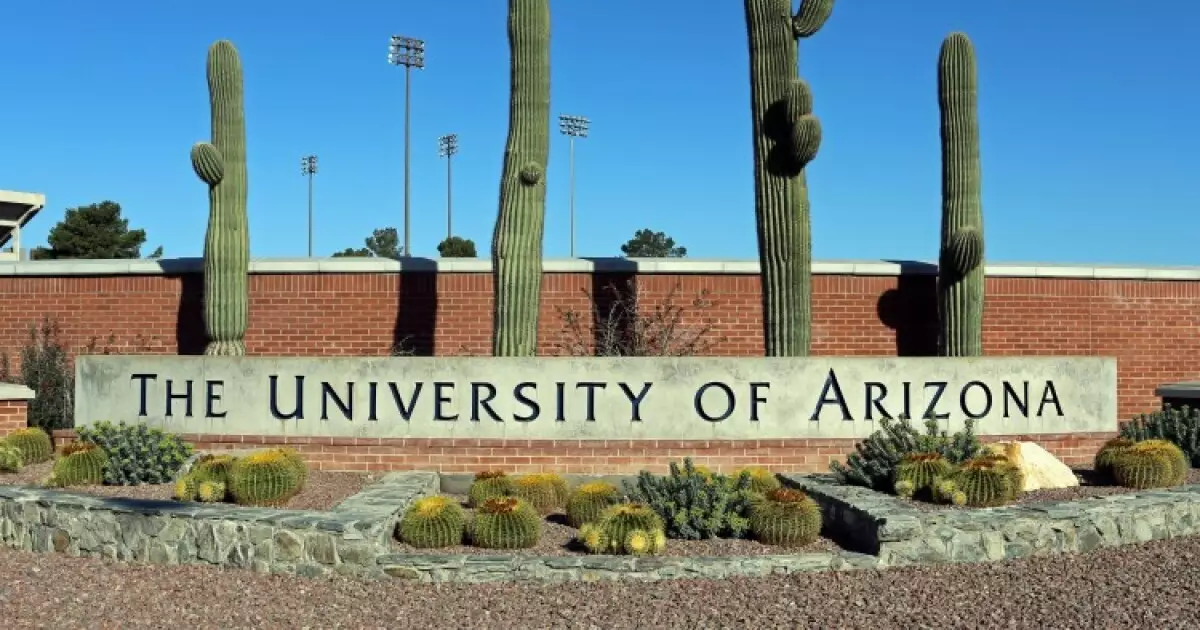The University of Arizona’s Financial Landscape: Navigating Market Challenges and Restructuring Efforts

The University of Arizona (U of A) is making headlines as it enters the municipal bond market for the first time since a series of negative ratings alerts from major credit agencies. With a bond issue amounting to $115.645 million, designated for the Stimulus Plan for Economic and Educational Development (SPEED), the university aims to refund debt incurred back in 2013 and 2014. This financial maneuver comes amidst broader concerns regarding the university’s financial stability and governance practices, raising several questions about the university’s future, fiscal health, and strategic planning.
Earlier this year, both Moody’s Ratings and S&P Global Ratings downgraded their outlooks for the U of A’s bonds from stable to negative. The prestigious institution currently holds an Aa2 rating from Moody’s and an AA-minus rating from S&P for its senior lien bonds, with Aa3 and A-plus ratings for subordinate liens. These downgrades stem from a stringent evaluation of the university’s fiscal health, particularly highlighted by dwindling cash reserves that fell from $844.5 million in fiscal 2022 to $704.5 million in 2023. Such figures are troubling, as they indicate a mere 110 days of cash on hand, well below the guidelines set by the Arizona Board of Regents.
Budget Deficit Mitigation: Steps Forward
The report from the previous fiscal year noted a pronounced budget deficit that stemmed largely from operational losses and challenges within athletic departments. This situation prompted tough decisions from the administration, including hiring freezes, travel restrictions, and the postponement of essential capital projects. Following these measures, efforts to enhance financial reporting systems were initiated, effectively reducing the budget deficit from an alarming $177 million to a more controllable $63 million in just six months. According to university officials, these sweeping changes indicate a commitment to restoring financial health while preserving academic integrity and research operations.
The University of Arizona has experienced significant transitions in its governance structure in the wake of financial strains. This included the resignation of CFO John Arnold, who previously served as the executive director for the Arizona Board of Regents, further signaling instability at the top. The University President, Robert Robbins, faced scrutiny after a pay cut, culminating in a recent leadership shift with the appointment of Suresh Garimella as his successor. Moody’s assessment points out that ongoing governance issues could also affect the university’s creditworthiness, with their report highlighting vulnerabilities linked to governance disruptions and weak operating performance.
Looking ahead, the university anticipates a projected $65 million budget deficit for fiscal year 2025, complicating its financial trajectory. The allocated budget amounts to nearly $1.3 billion, yet sinking cash reserves, projected to decline from $641 million to $576 million by the end of fiscal 2025, illuminate the hurdles that the university must overcome. These financial challenges necessitate urgent actions to balance the budget and build more robust liquidity moving forward.
State Oversight and Ongoing Risks
In response to these financial difficulties, Arizona’s Democratic Governor, Katie Hobbs, has indicated a strong desire for increased oversight and accountability from university regents. The governor’s recent actions included appointing a former prosecutor to the board, whose mandate seems aligned with enforcing stricter financial governance. Additionally, concerns surrounding the university’s acquisition of Ashford University—recently renamed University of Arizona Global Campus—pose integration risks that could worsen its liquidity status further.
While the University of Arizona seeks to navigate its financial troubles with a new bond issuance, the complexities of balancing debt, governance challenges, and operational efficiency remain daunting. The scrutiny from credit agencies, coupled with state pressure, emphasizes the need for strategic reforms and systems overhaul to secure its financial future. In essence, the university’s journey to re-establish financial stability will demand rigorous discipline, innovative thinking, and a resolute commitment to educational excellence amidst challenging fiscal circumstances. Transitioning through this critical moment could redefine its legacy and ensure that it not only survives but thrives in the evolving landscape of higher education.





